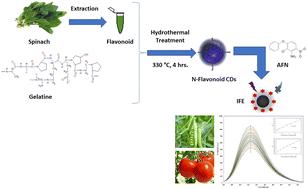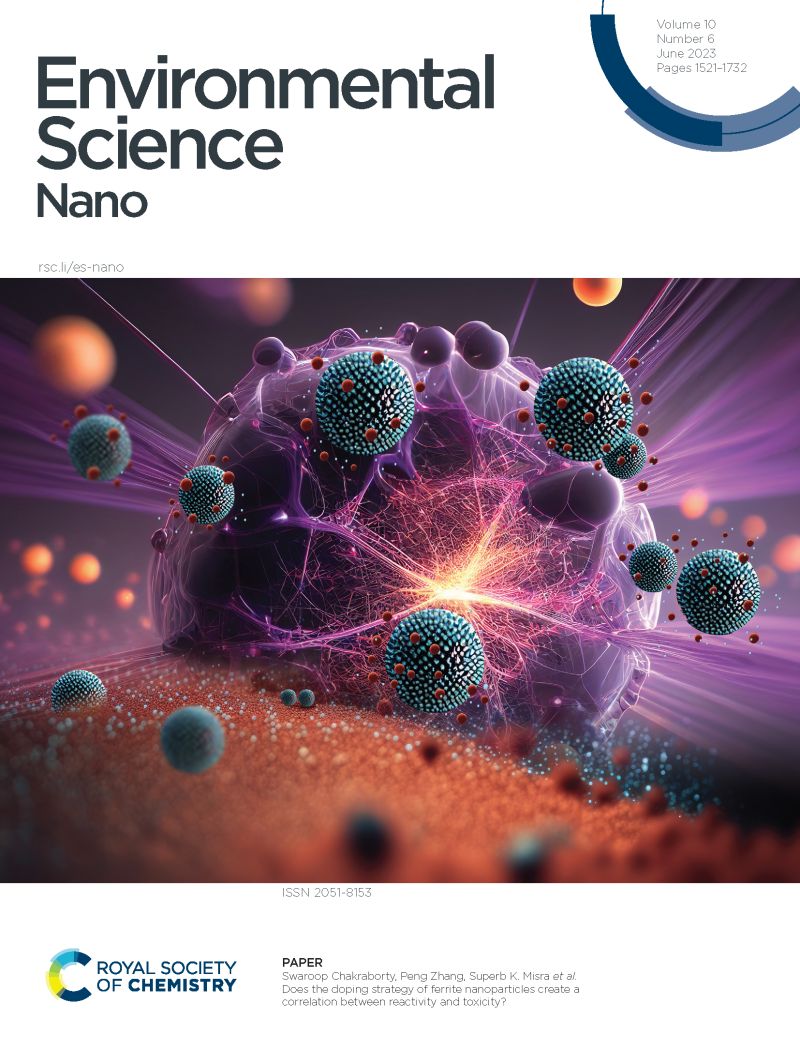绿色光致发光碳点:无菌素农药的灵敏选择性光学检测
IF 5.1
2区 环境科学与生态学
Q1 CHEMISTRY, MULTIDISCIPLINARY
引用次数: 0
摘要
本研究利用绿色和水溶性碳点(cd)开发了一种新型荧光传感器,用于检测农业样品中的农药无性虫胺(AFN)。该传感器基于直接内滤波效应(d-IFE)机制,具有较高的灵敏度和选择性。以菠菜和明胶等绿色原料为原料,通过水热法合成了蓝色荧光“n -黄酮- cds”,在320 nm激发下在430 nm处发光。AFN的吸收光谱与n -类黄酮- cds的荧光发射光谱重叠;因此,在n -类黄酮- cds中加入AFN会产生屏蔽效应,阻止n -类黄酮- cds的激发。这种现象导致荧光猝灭,荧光猝灭随AFN浓度的增加而增加。充分探讨了n -黄酮- cds的特性以及AFN对n -黄酮- cds荧光的减弱程度。该荧光传感器对AFN具有高灵敏度检测能力,检测限低至0.05 μM,线性响应范围为0.07 ~ 6.67 μM。研究了与AFN和其他干扰离子结构相似的干扰离子,结果证实了该荧光传感器在检测峰值时具有高选择性、良好的准确性和回收率。这表明这种荧光传感器可以有效地应用于食品分析和环境检测。本文章由计算机程序翻译,如有差异,请以英文原文为准。

Green photoluminescent carbon dots: sensitive and selective optical detection of aclonifen pesticide
This research developed an innovative fluorescent sensor using green and aqua-soluble carbon dots (CDs) to detect the pesticide aclonifen (AFN) in agricultural samples. The sensor is based on the direct inner filter effect (d-IFE) mechanism, which confers high sensitivity and selectivity. Blue fluorescence “N-Flavonoid-CDs” were synthesized from green sources such as spinach and gelatin through a hydrothermal approach that exhibited emission at 430 nm when excited at 320 nm. The absorption spectra of AFN overlap with the fluorescence emission spectra of N-Flavonoid-CDs; therefore, a shield effect occurs by adding AFN to the N-Flavonoid-CDs, preventing excitation of the N-Flavonoid-CDs. This phenomenon causes fluorescence quenching, which increases with higher AFN concentrations. The characteristics of N-Flavonoid-CDs and the extent to which AFN diminished N-Flavonoid-CDs' fluorescence were fully explored. The proposed fluorescent sensor exhibits a highly sensitive detection capability for AFN, with an impressively low detection limit of 0.05 μM and a linear response range spanning from 0.07 μM to 6.67 μM. Interferences, with similar structures to AFN and some other interference ions, were investigated, and the results confirmed the high selectivity, excellent accuracy, and recovery in detecting spikes in the suggested fluorescent sensor. This suggests that such fluorescent sensors can be effectively applied in food analysis and environmental detection.
求助全文
通过发布文献求助,成功后即可免费获取论文全文。
去求助
来源期刊

Environmental Science: Nano
CHEMISTRY, MULTIDISCIPLINARY-ENVIRONMENTAL SCIENCES
CiteScore
12.20
自引率
5.50%
发文量
290
审稿时长
2.1 months
期刊介绍:
Environmental Science: Nano serves as a comprehensive and high-impact peer-reviewed source of information on the design and demonstration of engineered nanomaterials for environment-based applications. It also covers the interactions between engineered, natural, and incidental nanomaterials with biological and environmental systems. This scope includes, but is not limited to, the following topic areas:
Novel nanomaterial-based applications for water, air, soil, food, and energy sustainability
Nanomaterial interactions with biological systems and nanotoxicology
Environmental fate, reactivity, and transformations of nanoscale materials
Nanoscale processes in the environment
Sustainable nanotechnology including rational nanomaterial design, life cycle assessment, risk/benefit analysis
 求助内容:
求助内容: 应助结果提醒方式:
应助结果提醒方式:


